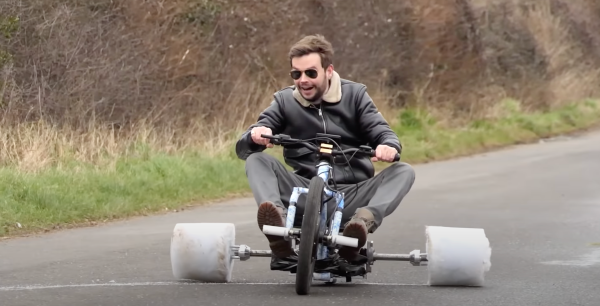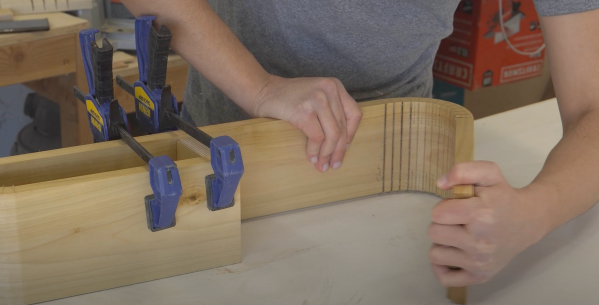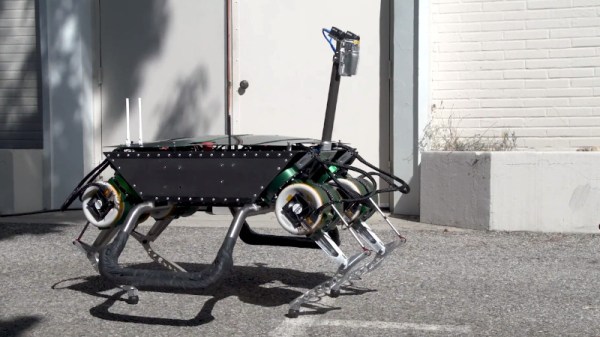A drift trike is a small sturdy tricycle with a powered front wheel and rear wheels with low friction so that you can drift. They’re fun but there are tons of them. Nowadays, if you want to make your own drift trike that stands out, you have to put your own spin on it. And in terms of extra spin, what better way to do it,than to use ice for the wheels. [Sam Barker] started by breaking down an old used BMX bike. A front-wheel hub motor wasn’t available so he had to make some modifications to use his rear-wheel one as a front wheel. After tweaking the seat to put more weight on the front wheel for better traction, it was time to get started on wheels.
Rather than using straight ice, he settled on using a composite. Inspired by Pykrete, he swapped the wood pulp for cotton fibers. After weighing out different percentages of fiber to water, he had a half dozen or so different samples to test. What he found was that anything about 2% was quite strong to the point where smacking it with a hammer didn’t do much. Happy with the results, he 3D printed a mold to hold the ice as it hardens. [Sam] pulled it out a little too early only to have the some of the unfrozen middle leak out. He refilled the mold and got a second wheel going. After waiting for it to fully freeze, he had one and a half wheels and it was time to go for a spin. We appreciate the furze-esk music during the drifting as he is a clear inspiration throughout all of this. We love seeing the tire skids on the pavement, knowing they’ll evaporate soon.
It’s telling that wheels lasted longer than the frame. He admits he just got his MIG welder, so perhaps next time with more practice his tacks will be a little stronger. [Sam] has a love for making electronic vehicles as he’s made a monowheel, a bicycle, and now a tricycle. Perhaps some sort of giant four-wheeled inline skate is next? Other drift trikes don’t go the route of reducing friction but instead focus on delivering so much torque to the wheels that they can’t help but slip. Video after the break.
Continue reading “Drift Trike Puts A New Spin On Things With Ice Wheels”


















